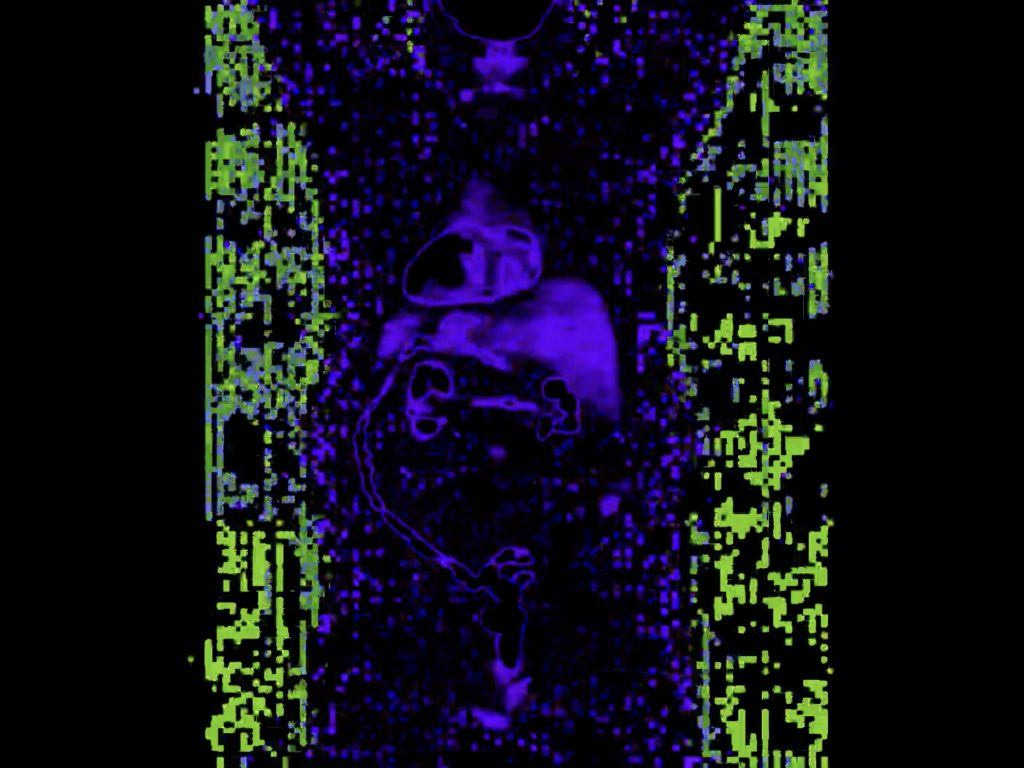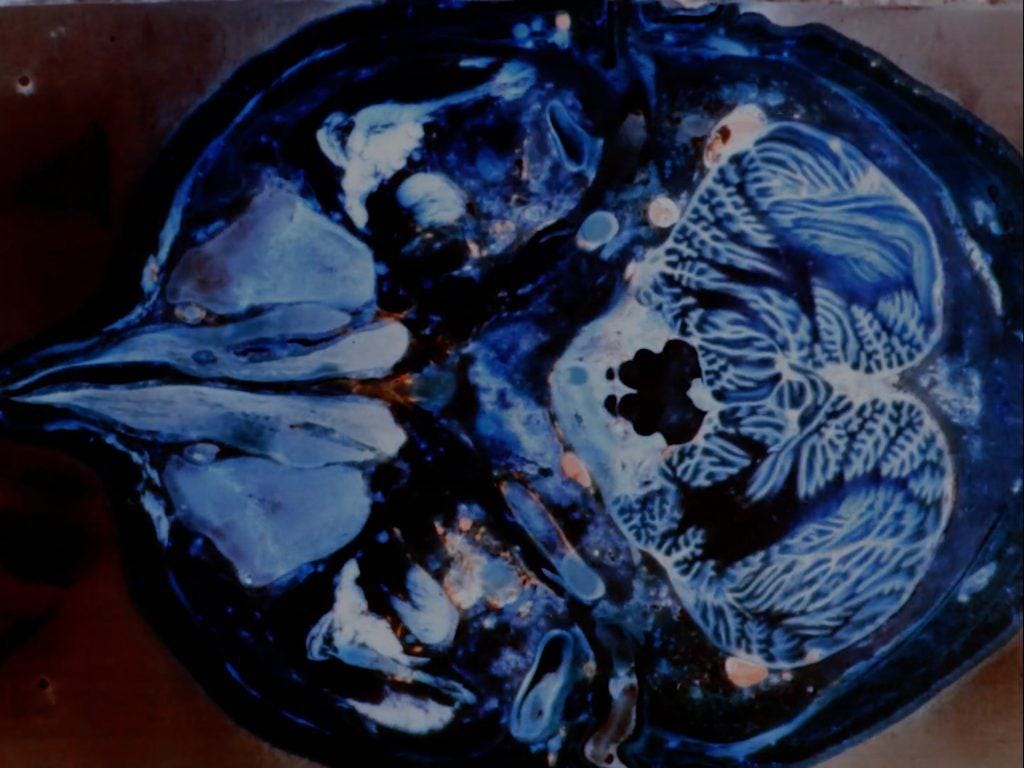The Mechanics of Vision: in ocula oculorum
(2021)
in ocula oculorum, a 12 minute short by Anna Kipervaser, is like a trip inside of the human eye, looking at the act of looking, especially the act of looking at movies, and how a film or video projector creates the illusion of movement.
The film opens with some individual frames of film, scrolling vertically. We are looking at fluorescently colored x-ray images of a body part. The frames scroll faster and faster, blurring until they produce the characteristic illusion of movement which is the heart of cinema, morphing into colorful blobs, constantly changing shape. On the soundtrack, a low electronic pulsing gradually rises in pitch, demonstrating the aural equivalent to the persistence of vision illusion in film, as individual waveforms blur together to create a musical tone. In this way, oculorum signals its focus on the biological foundation of sensory experience.
This extended opening section features a montage of medical imaging: different computerized representations of cells, bones, and nerves, using technologies both new and vintage, and generally colorized in brilliant, saturated colors. Images which change on every frame overlap with sequences of smooth motion, presenting us with the illusion of motion while at the same time subverting it. A variety of film and video test patterns flash by, referencing the scientific and mathematical approach to understanding human vision.
We watch constantly transforming cell-like blobs which might be developing fetuses; they might represent cell mitosis. We might be inside the eyeball itself, that lens full of fluid and gel, flickering with electric signals. Orifices contract and expand, as long, sustained tones overlap. Organic sounds of string instruments and the human voice mingle with electronic tones. This colorful parade of representations of the body shows the brain’s obsession with images: we even try to understand our own experience of vision by creating images of it.
Finally, two thirds of the way through the film, we arrive at the ultimate destination of this exploration of technologically mediated sensory experience: Kipervaser’s foray into the “flicker film,” a genre of experimental film which uses rapidly alternating frames of pure color to create astonishing illusions of shape and movement, which we perceive, even though these forms aren’t present in any of the film frames. Filmmakers have been working in this genre at least since Peter Kubelka’s Arnulf Rainer (1960), with many others contributing expansions of the idea since.
Kipervaser’s flicker film, especially because of her use of opposing colors such as cyan and red, is particularly pulsating and mesmerizing, causing me to experience visceral sensations of seeing spinning circles and expanding and contracting honeycombs and squares. In keeping with the film’s preoccupation with illusory motion, there are persistent illusions of forms rushing across the screen. One section features black stripes over intense, vibrant magenta, creating a kind of “simultaneous color contrast” effect which caused me to see an illusion of colored stripes along the edges, which only intensified the bizarre effects when flickered.
in ocula oculorum begins by examining representations of the body, and ends by plunging us directly into a maelstrom of visual sensation, mechanically mediated. Our machines are devices which slice up bodily, human experience, and then feed it back to us, transformed. In this way, Kipervaser restores the sensuous experience of vision, which is no longer simply a way of moving through the world without bumping into things, but a strange and deeply pleasurable human capacity, our way of absorbing and merging with the pulsing energy of the universe.
My articles on experimental film are freely available to all, but are supported by monthly and annual donations from readers. Please consider becoming a paid subscriber to support my work. Thank you.




